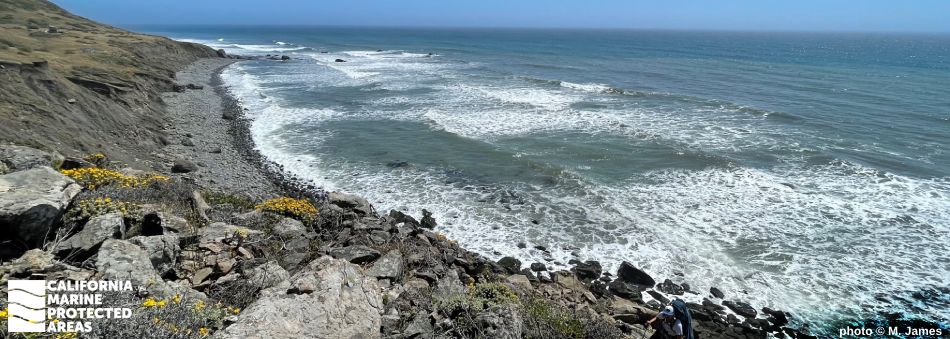
Overview
Sea Lion Gulch State Marine Reserve (SMR) sits along California’s Lost Coast, about five miles south of Mattole River Beach, the northern terminus of the Lost Coast Trail. Sea Lion Gulch SMR spans two miles of remote coastline, starting just north of Sea Lion Gulch and running south to a half mile past Cooskie Creek. This marine protected area (MPA) protects more than 10 square miles of sandy beaches, rocky shores, sandy seafloor, and rocky reefs with depths ranging from shore to deeper than 370 feet.
Home to gorgonian corals, feather stars, abalone, octopus, wolf-eels, lingcod, rockfish, and other marine life, Sea Lion Gulch SMR was designed to encompass a wide range of habitats, protect seabird colonies, and provide research opportunities in an area with limited human impact. As one of the most remote MPAs in the state, Sea Lion Gulch SMR can only be reached by boat or hiking.
Regulations
It is unlawful to injure, damage, take, or possess any living, geological, or cultural marine resource.
California Code of Regulations Title 14, Section 632(b)(14)(opens in new tab)
Quick Facts
MPA size: 10.42 square miles
Shoreline span: 2.0 miles
Depth range: 0 to 375 feet
Habitat composition*:
- Rock: 5.25 square miles
- Sand/mud: 6.38 square miles
*Habitat calculations are based on three-dimensional area and may exceed the total MPA area listed above.